Delivering Quality
How USAID’s partnership with the Government of India transformed labor and delivery rooms for safer childbirth
With lots of family input to consider, Shivani is still deciding on a name for her first born baby, calling her Angel for the moment — a name suggested by her sister. Thanks to the respectful care and delivery she received last month at the Ranchi District Hospital, in Jharkhand, India, she can now spend time recovering and enjoy thinking about name choices with her husband, Amit.
Poor quality care, particularly before, during, and after childbirth, is a major driver of maternal deaths. In India, USAID partnered with the Ministry of Health and Family Welfare to develop and implement a model for labor and delivery rooms using standard operating protocols and tools such as checklists and audit forms, combined with regular quality improvement committee meetings, to identify and resolve issues that measurably improve the quality of care around birth.
This initiative focused on facilities that have a high number of patients, like Ranchi District Hospital, and targeted the six states that need the most support for maternal and newborn care, including Jharkhand.
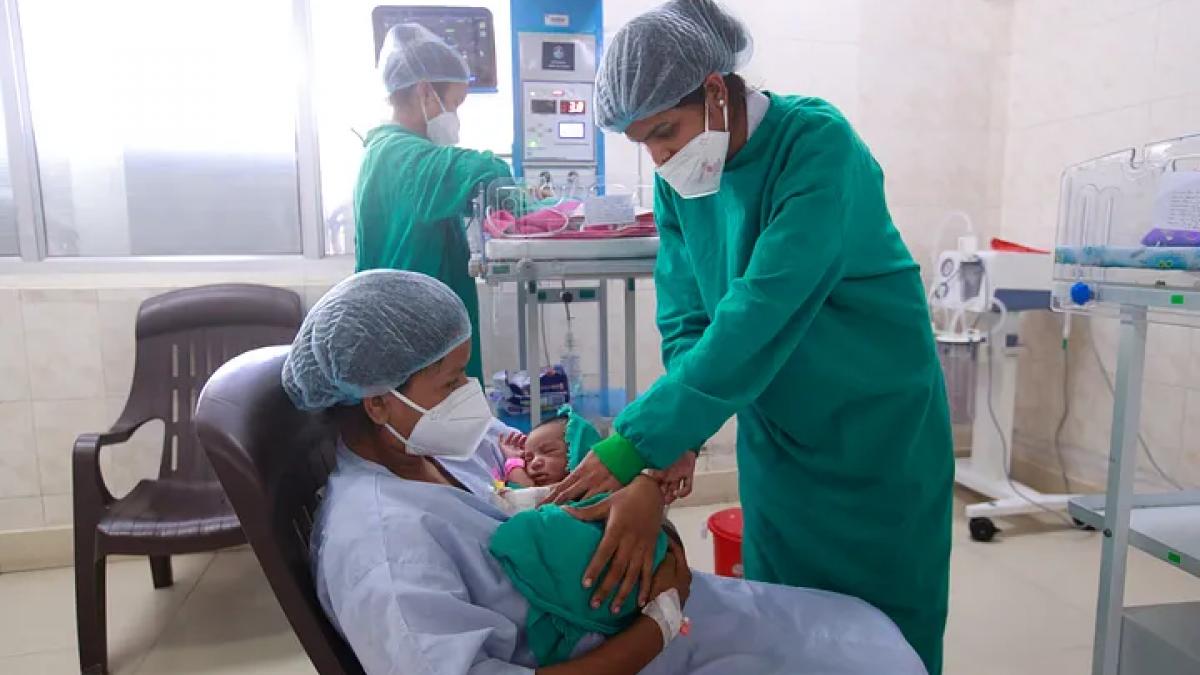
Shivani holds her baby with support from a health worker in the Special Newborn Care Unit at the Ranchi District Hospital in India.
Prakhar Rajoria
“From food to supervision, and medicine, everything was very good,” said Shivani.
The initial results of this partnership were overwhelmingly positive, with a 20% reduction in stillbirths and neonatal deaths. Recognizing the positive impact this initiative could have around the country, the Government of India invested in scaling the quality improvement approach to labor room care nationwide.
This means that mothers across India, like Shivani, can have a more positive, safer, and more comfortable delivery experience.
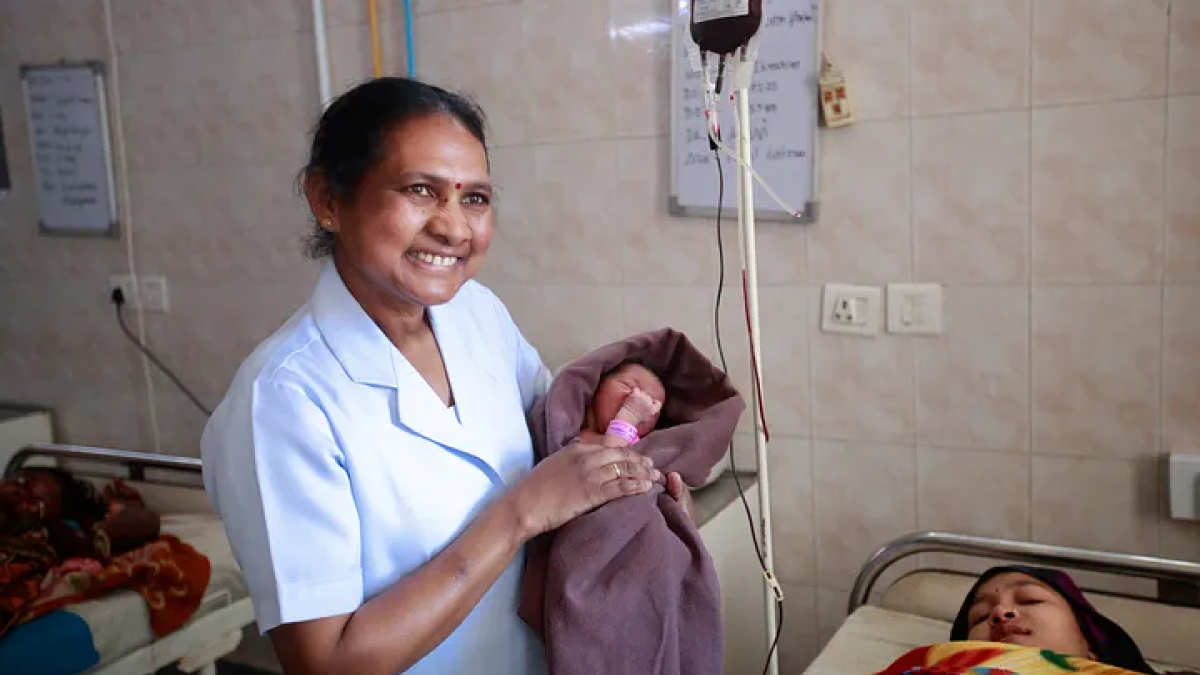
How USAID’s partnership with the Government of India transformed labor and delivery rooms for safer childbirth
Prakhar Rajoria
“We did not know that much about quality care,” said Sister Theresa, a nurse at the hospital since 2005.
Staff were spread thin and worked both in the operating and labor rooms. There was little to no documentation of issues, which led to limited evidence to push for improvements or change in delivery of care. “If someone asks about complications, we did not have that much idea as to how many complications we handled,” she explained.
Starting in 2018, Sister Theresa and other staff members at the hospital attended lectures and training on quality labor room care. The Government of India provided the training, and USAID provided access to technical assistance, job aids, and supportive supervision. From there, staff began to practice active management of the third stage of labor, maintain a sanitary, hygienic space, and lead staff training on engaging care and ways to respond to patient feedback.
“[W]e seem to have achieved a 90% patient satisfaction score in one year,” said Sister Theresa, who is now the nurse in charge of the labor unit.
Towards the end of her pregnancy, Shivani experienced pain in her belly and headed to Ranchi District Hospital, a 10-minute drive from her home. She learned she needed a Cesarean section. Despite the pain, she said she was not scared. The staff, engaging and supportive, explained the process to her and her sister throughout the surgery.
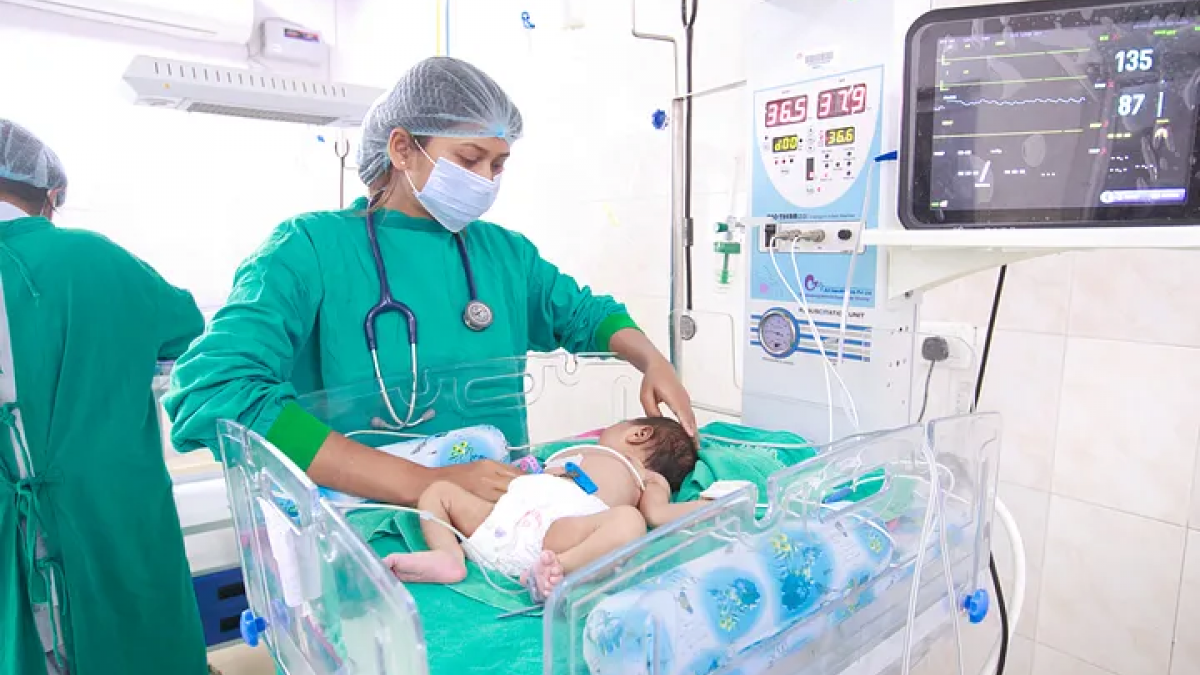
A health worker at the Ranchi District Hospital in India caring for a newborn baby.
Prakhar Rajoria
“They were calling me, ‘babu babu,’ (a common term of endearment from elders),” said Shivani, whose family was allowed to accompany her in the hospital, which provided companionship and comfort through the process.
At the hospital, nurses help teach new moms and parents skills like breastfeeding and timing for feeding the newborn, as well as “Kangaroo Mother Care” for skin–to-skin contact and temperature regulation — a critical intervention for small and sick newborns within the special newborn care unit (SNCU).
Staff demonstrate safe handling of small newborns, including handwashing, and methods to safely feed, hold, clean, change, and care for the babies both to the mothers as well as fathers and family members. Through this training and by moving the small and sick newborn units closer to the delivery recovery room, parents have a more hands-on role with their newborns even when they are hospitalized.
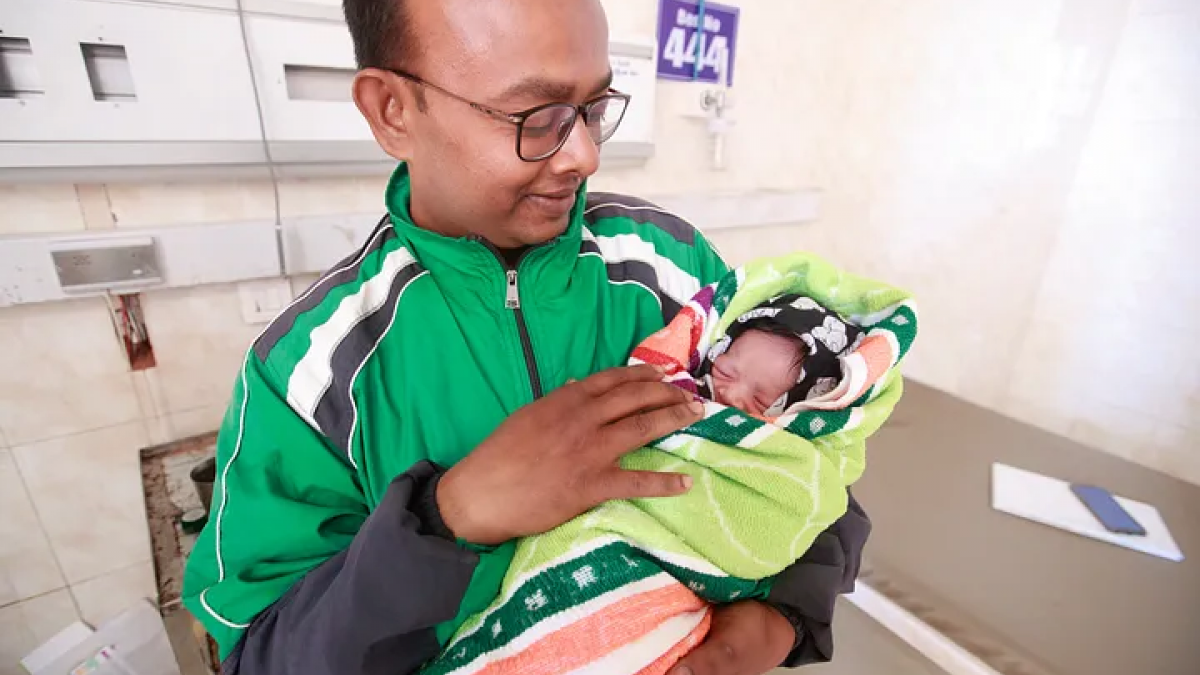
Amit holds his newborn baby at the Ranchi District Hospital in India.
Prakhar Rajoria
A handwashing prompter provides a score to ensure proper hygiene, and guidance materials as well as the informative videos playing in the background provide newborn care instructions. Involving new parents and sharing caregiving skills and demonstrations helps new parents like Shivani and Amit play an active role in the care of their newborn during the hospital stay.
“Everyone is getting help here, and helping each other,” said Shivani.
Involving mothers and family members in the care of newborns in the SNCU increases how quickly babies can be sent home, supports the bond between baby and mom, and builds the confidence of parents and other caregivers to care for their newborns when they bring them home.
The Ministry of Health and Family Welfare, with support from USAID, updated the national guidelines on involving families in the care of small and sick newborns, and now plans to scale this high impact intervention in the private sector. In the past three years, through targeted investments like this one that show impact, USAID’s health programs in India have generated a 10 to 1 return on investment through public and private sector scale up.
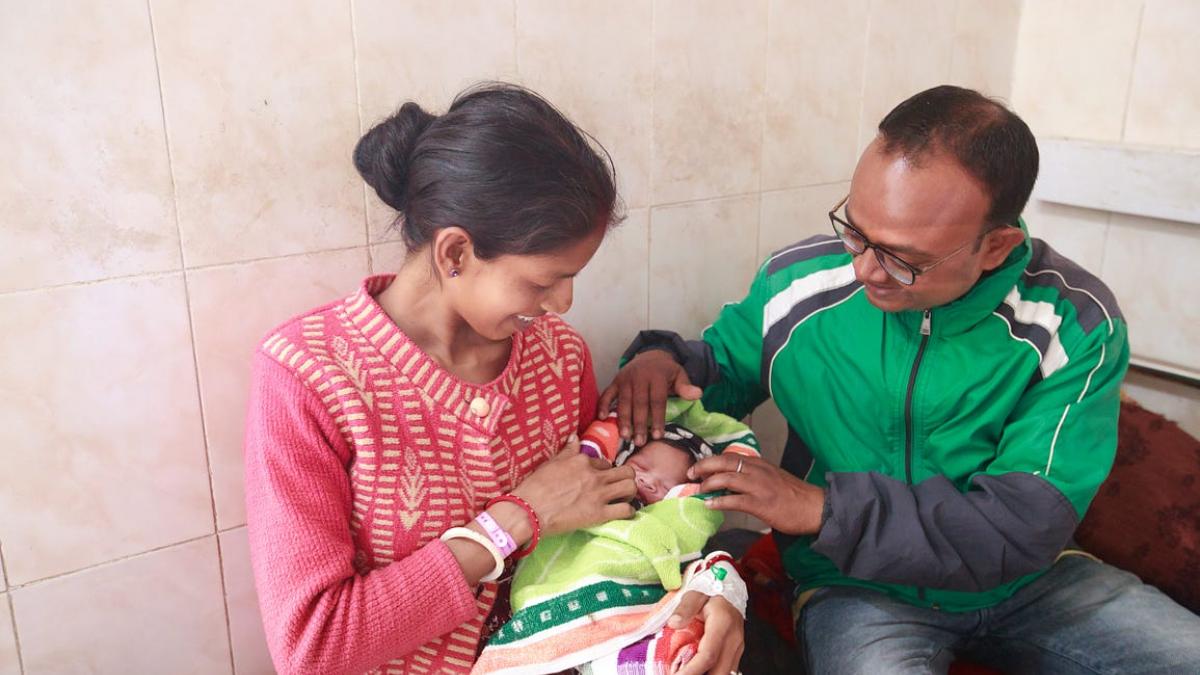
Shivani (left) and Amit (right) admire their new baby at the Ranchi District Hospital in India.
Prakhar Rajoria for USAID
About the Author
USAID’s Office of Maternal and Child Health and Nutrition works to ensure that all women and children have the same chance of a healthy life, regardless of where they live or are born.

